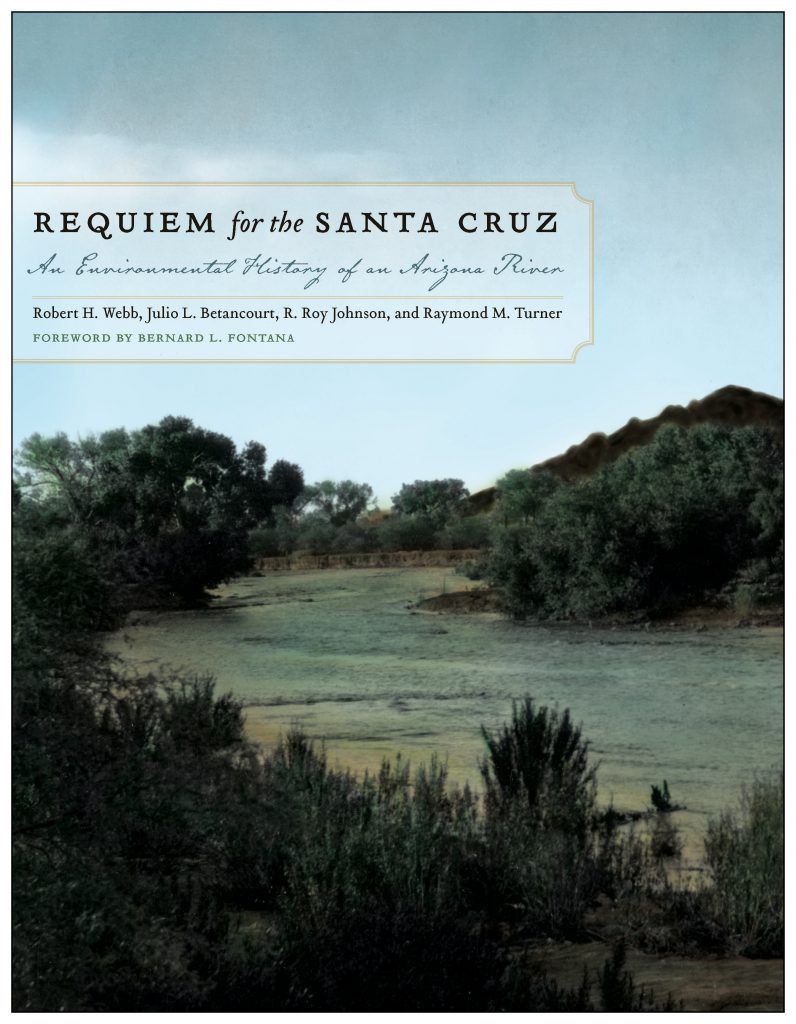
Dr. Robert H. Webb discussed his book “Requiem for the Santa Cruz: An Environmental History of an Arizona River” during a Zoom session at the Camp Verde Community Library on Thursday, April 18. His co-authors included Julio L. Betancourt, R. Roy Johnson, Raymond M. Turner and Bernard Fontana.
The book attempted to recreate the environmental history of the Santa Cruz River in southern Arizona from anecdotal descriptions, photographs and other visual and quantitative evidence.
Webb has studied long-term changes in the ecosystems of the Southwestern United States since 1976. He holds degrees in engineering, geosciences and environmental earth sciences. He also worked as a research hydrologist with the U.S. Geological Survey in Tucson and an adjunct faculty member of the School of Natural Resources and the Department of Hydrology and Water Resources at the University of Arizona.
Webb said that the first part of the river’s story involved the downcutting of the arroyo of the Santa Cruz. Before 1880, the river was a discontinuous ephemeral stream with high groundwater levels, but in the 1880s, the river began downcutting and its channels widened, which was associated with frequent large floods on the river. He suggested four hypotheses for the downcutting, including livestock grazing, floodplain disturbance, groundwater decline from drought and climatic variability.
While Webb said it was possible that overgrazing destroyed rangeland vegetation, causing erosion of the Santa Cruz’s channel, he argued that it was not the only factor.
“Water for development is an important part of this story because as water is extracted from the alluvial aquifer, bad things happen to riparian vegetation,” Webb said.
In the 1880s, the Santa Cruz was flooding houses and damaging properties as well as causing bridge collapses, and after wide channels were filled in with landfills in the 1930s, property damage increased in the late 1970s and early 1980s. Webb attributed these efforts to local government management priorities being flood control rather than ecosystem preservation.
Between 1916-77, only minimal flooding occurred, which Webb said led to complacency and development encroaching on the floodplain. After Hurricane Heather in 1977, soil cement was installed along portions of the channel in the 1980s to help limit channel change. A further large flood in 1983 led to flood control efforts that Webb called ugly but effective, including installation of soil cement along the entire arroyo by Pima County.
From the 1910s to 1970s, the 100-year flood measurement for the Santa Cruz was around 20,300 cubic feet per second, spiking between 1977 and 1983 at 75,800 cubic feet per second and falling back to an average of 20,100 cubic feet per second in the 1980s.
Webb also discussed the Great Mesquite Forest, originally an open cienega of grasslands lined with mesquite that was colonized by mesquite after the downcutting of the 1880s. He called the forest a world class avian ecosystem that attracted top ornithologists from around the world and over 100 species of resident and migrant birds. The forest survived floods, downcutting and woodcutting but disappeared at some point as the groundwater table dropped.
Factors that Webb highlighted as contributing to the forest’s demise were Mahlon E. Layne’s invention of the vertical turbine pump in 1902, allowing aquifers to be pumped from underground rather than above ground, and Mayor C.K. Smith’s exploitation of the water of the San Xavier district without regard for the ecosystem.
Closing his lecture with a reference to the book’s title, Webb proposed his audience either let the river die and give it a requiem or resurrect it. He said he was hopeful for a limited return of the Great Mesquite Forest.